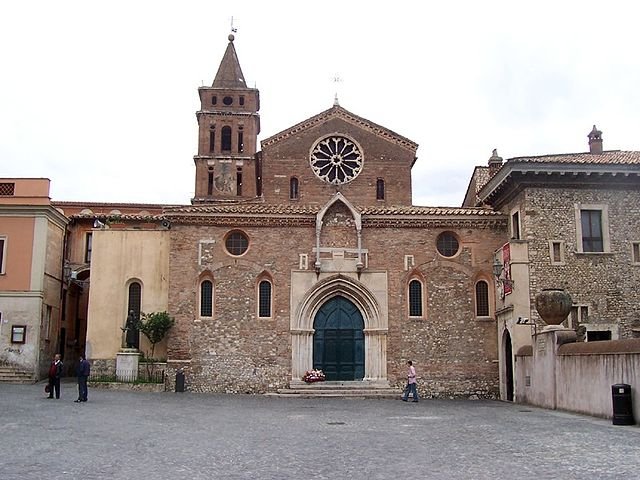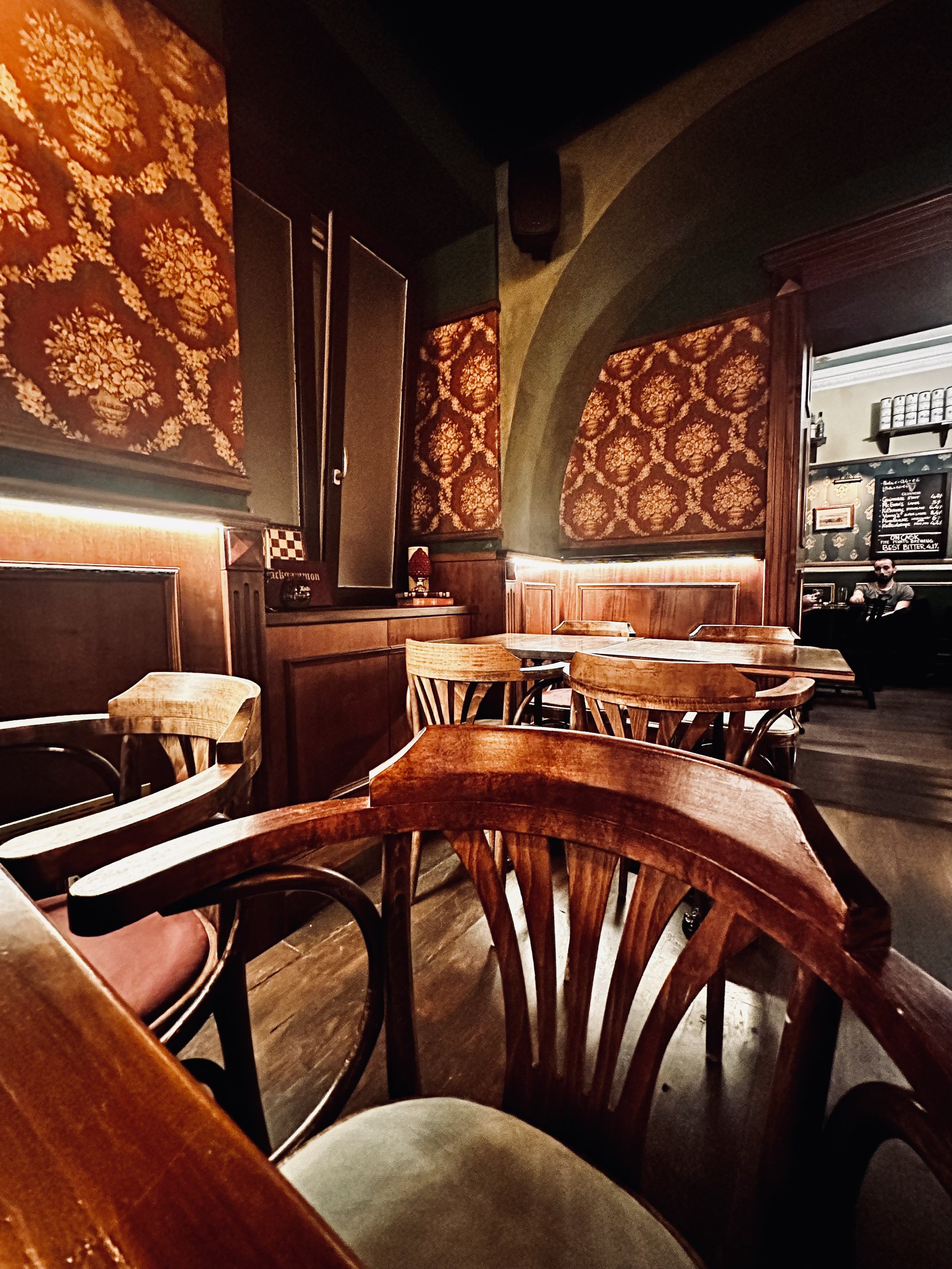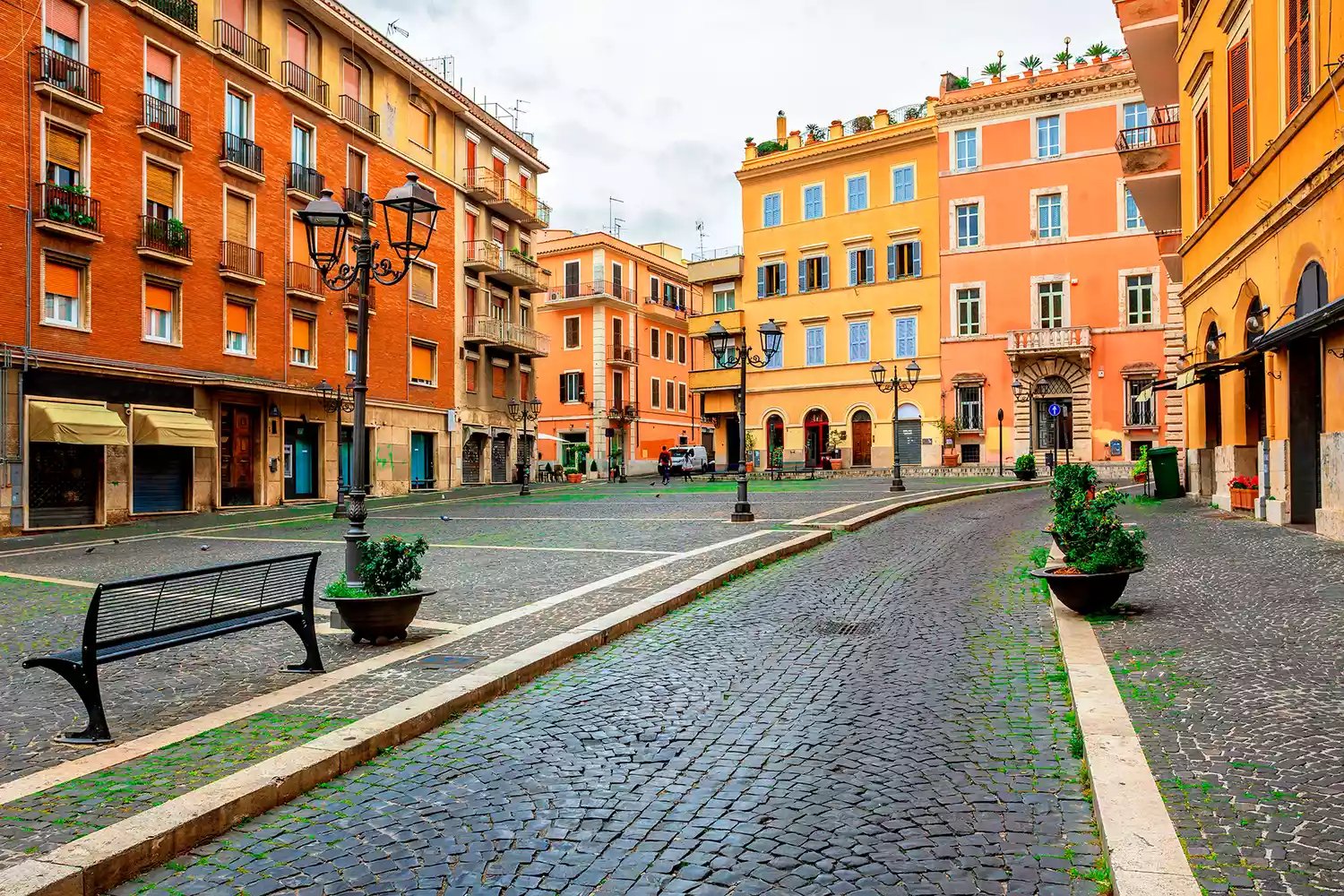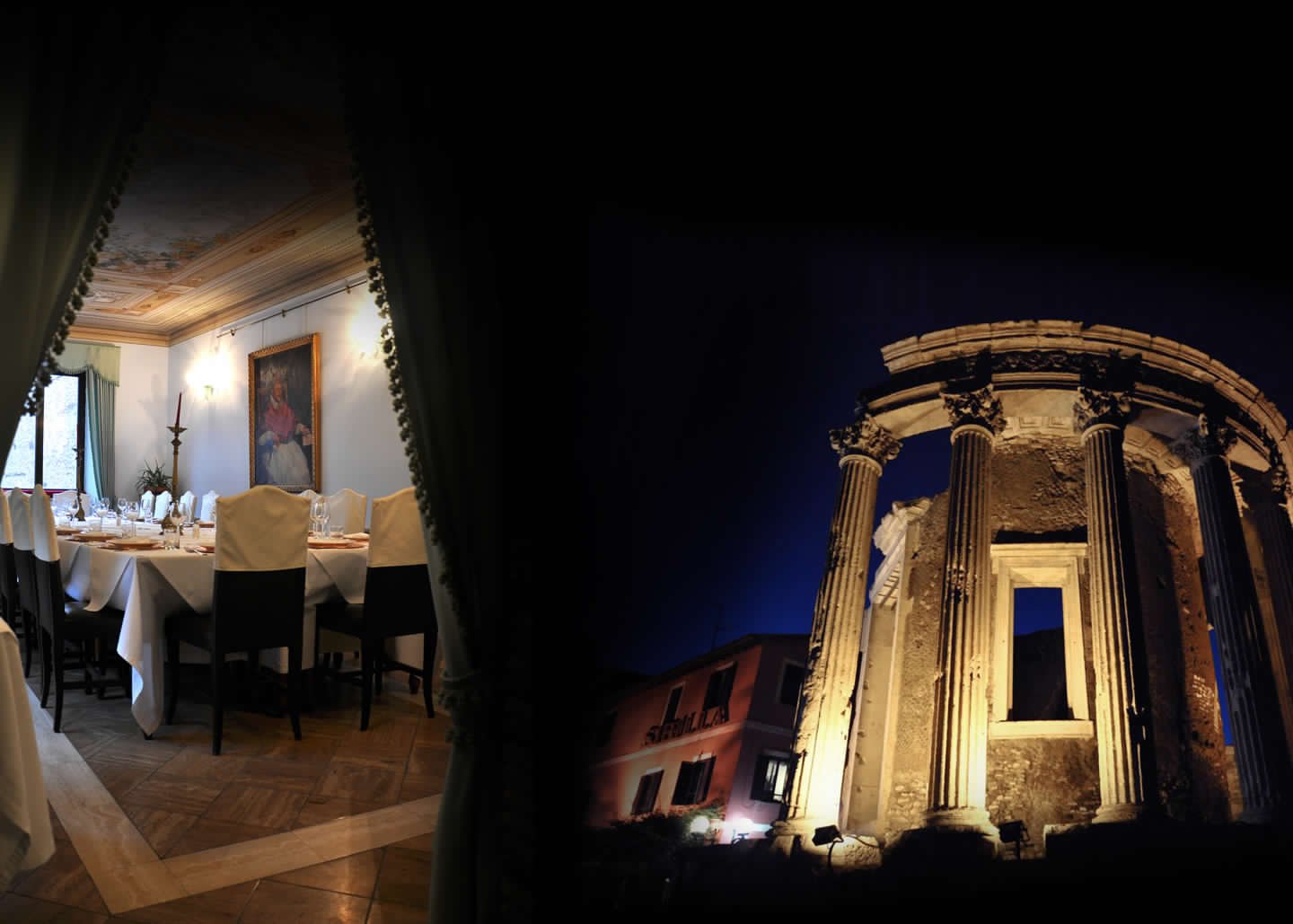Tivoli Walking Guide (A self-guided Tour)
a day in tivoli
Sean Pavone/Getty Images
In this article, discover the fun and adventure of a day in tivoli italy. this article outlines the places you can walk & see in the historical centre!
Villa d'Este
P.za Trento, 5, 00019 Tivoli RM
Villa d'Este is a renowned UNESCO World Heritage site located in Tivoli, Italy. This historic villa is celebrated for its magnificent Renaissance architecture, stunning gardens, and elaborate fountains. Originally commissioned by Cardinal Ippolito II d'Este in the 16th century, the villa stands as a testament to the opulence and grandeur of the Italian Renaissance.
The villa's interior is adorned with frescoes, intricate decorations, and opulent rooms that showcase the wealth and cultural sophistication of its time. However, it is the exterior that truly captivates visitors. The extensive gardens are a masterpiece of landscape design, featuring terraces, fountains, and waterfalls that create a harmonious blend of architecture and nature.
-
Villa d'Este, a masterpiece of Italian Renaissance architecture and landscape design, has a rich and fascinating history dating back to the 16th century.
-
Commissioned: The villa was commissioned by Cardinal Ippolito II d'Este, the son of Alfonso I d'Este and Lucrezia Borgia. Cardinal Ippolito II was an influential figure in the Catholic Church, and his desire for a luxurious residence and magnificent gardens led to the creation of Villa d'Este.
-
Architectural Marvel: The renowned architect Pirro Ligorio was entrusted with the design of Villa d'Este. Construction began in 1550 and continued for several years, resulting in an architectural marvel that blended classical and Renaissance elements. The villa was intended to showcase the wealth, power, and aesthetic sensibilities of its owner.Gardens and Water Features: One of the most remarkable aspects of Villa d'Este is its elaborate gardens and water features. The villa's terraced gardens are adorned with a stunning array of fountains, waterfalls, and sculptures. The ingenious use of water, cascading down from one level to another, creates a mesmerizing and soothing ambiance.
World Heritage Site: In recognition of its cultural significance, Villa d'Este was designated as a UNESCO World Heritage Site in 2001. The inscription acknowledges not only the architectural and artistic merits of the villa but also its influence on subsequent garden designs in Europe.
Cardinal Ippolito II's Legacy: Cardinal Ippolito II enjoyed his splendid villa for only a short time before his death in 1572. However, his vision and legacy lived on through the centuries. Villa d'Este changed hands several times over the years, and each owner contributed to its maintenance and preservation.
Public Ownership: In the 19th century, Villa d'Este became the property of the Italian state. It underwent periods of restoration and conservation to ensure its continued splendor and accessibility to the public.
Tourist Attraction: Today, Villa d'Este is a major tourist attraction, drawing visitors from around the world to marvel at its architectural grandeur, lush gardens, and water features. The villa stands as a testament to the enduring allure of Renaissance aesthetics and the cultural heritage of Italy.
The history of Villa d'Este is not merely a narrative of construction and ownership but a tale of artistic vision, cultural legacy, and the timeless beauty of a place that continues to enchant and inspire generations.
2. Parish of Santa Croce in Santa Maria Maggiore
P.za Trento, 3, 00019 Tivoli RM
Directly nect to Villa D’este, youll find the green door of Parish of Santa Croce in Santa Maria Maggiore. The church, with three naves, has side chapels only on the left; in the opinion of many, chapels also opened in the right nave, which would have been destroyed during the Renaissance transformations, when the area for the entrance to the Estense palace was enlarged. In reality these chapels never existed, as demonstrated by the presence of the medieval masonry on the external wall of the right nave, visible from the courtyard of the Palazzo d'Este until the last restorations. In the narthex you can admire the Gothic marble portal and the Renaissance tabernacle, which contains a 13th century fresco of the Madonna and Child. The bell tower, begun in 1590 and completed in 1602, was restored between the end of 2020 and the beginning of 2021. It perhaps takes up the design of the Ferrarese architect Giovanni Alberto Galvani (died in Tivoli in 1586), who had also worked at Villa d'Este.
Next, walk from Villa D’este/Parish of Santa Croce in Santa Maria Maggiore to: San Pietro alla Carità.
(5 mins walking)
3. San Gregorio da Sassola Pietro alla Carità
Via Campitelli, 00019 Tivoli RM
Roberto Fiume Photography
This church boasts a brick façade featuring three doors that lead to the central part of the building. At the top, two side windows with a central circle under the eaves enhance the exterior. The bell tower is adorned with cornices and arched windows. Moving to the interior, a cosmatesque floor graces the nave, while the apse of the main altar showcases notable artworks: "Christ crucified between the Virgin and St. John the Evangelist" from the fourteenth century and the "Madonna Enthroned with Saints Peter and Paul" from the thirteenth century.
Popular Culture
The church of San Pietro alla Carità in Tivoli serves as a backdrop for scenes featuring Girolamo Savonarola at the convent of San Marco in the third season of the TV series Medici. The façade and bell tower are prominently featured as Savonarola addresses the crowd of Florentines, with glimpses of the interior captured in various scenes.
-
The Church of San Pietro alla Carità in Tivoli has a rich history dating back centuries. While detailed historical records might require more localized research, here's a general overview:
Origins and Early Years:
The church's origins trace back to ancient times, likely built in the medieval period. Its foundation and early history may be intertwined with the growth of Tivoli as a community and the establishment of religious institutions in the area.
Architectural Features:
Over the centuries, the Church of San Pietro alla Carità would have undergone architectural changes reflective of the prevailing styles and needs of the time. Renovations, expansions, or modifications may have been carried out by different patrons or as a response to historical events.
Patronage and Renovations:
Throughout history, the church may have been under the patronage of various individuals, families, or religious orders. These patrons could have influenced the church's appearance and contributed to its maintenance and renovations.
Cultural and Religious Significance:
The church likely played a crucial role in the religious and cultural life of Tivoli. It might have been a center for community gatherings, religious ceremonies, and events that marked significant moments in the town's history.
Restorations and Preservation:
Like many historical structures, the Church of San Pietro alla Carità would have faced challenges such as natural disasters, wars, or simply the wear and tear of time. Restoration efforts, initiated by local communities or authorities, would have aimed to preserve the church's cultural and historical value.
Modern Times:
Today, the Church of San Pietro alla Carità could continue to serve as a place of worship and a cultural heritage site. It may attract visitors interested in exploring Tivoli's history and architectural legacy.
For a more detailed and accurate account, consulting local archives, historical documents, or reaching out to the church community may provide specific insights into the church's journey through time.
Next, walk from San Pietro alla Carità to Villa Gregoriana. (10 mins walking)
4. villa gregoriana
Largo Sant'Angelo, 1, 00019 Tivoli RM
Park Times: Open Everyday from 9AM to 3PM
Villa Gregoriana is a stunning park located in Tivoli, Italy, known for its natural beauty, historical significance, and captivating landscapes. This picturesque site is characterized by lush greenery, rocky cliffs, and cascading waterfalls, creating a serene and enchanting atmosphere. Wandering through well-maintained walking paths and trails, visitors are treated to a sensory experience that transcends the ordinary. The Ponte Gregoriano, a picturesque bridge spanning the Aniene River, serves as both a structural marvel and a vantage point for absorbing the scenic grandeur that unfolds at every turn. Villa Gregoriana is not merely a park; it is a tapestry of natural and historical wonders meticulously woven together to create an immersive and rejuvenating experience for those who seek solace in the embrace of nature's finest offerings.
-
Villa Gregoriana, situated in Tivoli, Italy, boasts a rich history intertwined with the beauty of its natural surroundings. While I can't provide an exhaustive historical account, here's a brief overview:
Commissioning and Construction (19th Century):
Villa Gregoriana was commissioned by Pope Gregory XVI in the early 19th century, with the aim of addressing the frequent flooding issues in the area. The landscape architect Giuseppe Valadier was entrusted with the design and execution of the project. Construction began in 1835 and continued for several years.
Transformation of the Landscape:
Valadier's vision for Villa Gregoriana included transforming the rugged and wild landscape into a picturesque haven. The park was strategically designed to harness the power of the Aniene River, incorporating waterfalls, gorges, and natural features that showcased the harmony between man-made and natural elements.
Great Waterfall and Caves of Neptune:
One of the most iconic features of Villa Gregoriana is the Great Waterfall (Cascata Grande) and the Caves of Neptune. The cascading water, the rocky cliffs, and the gorges create a dramatic and awe-inspiring spectacle, drawing visitors from near and far.
Ponte Gregoriano:
The Ponte Gregoriano, a picturesque bridge spanning the Aniene River, was constructed to connect different parts of the park. This architectural gem not only serves a functional purpose but also enhances the overall charm of the landscape.
Historical Significance and UNESCO World Heritage Site:
Villa Gregoriana, along with Villa d'Este, is part of the UNESCO World Heritage Site "Villa Adriana (Tivoli)." The recognition underscores the cultural and historical significance of the site.
Restoration Efforts:
Throughout the years, Villa Gregoriana has undergone restoration efforts to preserve its architectural and natural splendor. These initiatives aim to maintain the integrity of the park and ensure its accessibility to future generations.
Visitor Attraction:
Today, Villa Gregoriana stands as a popular destination for tourists and nature enthusiasts. Its lush greenery, cascading waterfalls, and historical structures continue to captivate visitors, offering a serene escape from the bustling city life.
While this overview provides a glimpse into Villa Gregoriana's history, for a more in-depth exploration, one may refer to local archives, historical documents, or specific studies on the subject.
5. explore the local eateries
Sean Pavone/Getty Images
tap below to read our tivoli bar & restaurant guide
Views from Both Risorante Sybilla & Il Ciocco
-
The historical center of Tivoli is a treasure trove of rich history, spanning centuries and offering a glimpse into the evolution of this charming Italian town. While an exhaustive historical account would require detailed research, here's a brief overview:
Ancient Origins:
Tivoli's history dates back to ancient times, with evidence of settlement by the ancient Italic tribes. The town, known as Tibur in Roman times, gained prominence due to its strategic location on the Aniene River and its proximity to Rome.
Roman Influence:
Under Roman rule, Tibur became a favored retreat for wealthy Romans seeking respite from the city. Villas, temples, and theaters were constructed, contributing to the town's architectural and cultural significance. The most notable example is Villa Adriana, the extravagant residence of Emperor Hadrian.
Medieval Period:
During the medieval period, Tivoli faced turbulent times with invasions and conflicts. The town evolved as a medieval stronghold, surrounded by defensive walls and towers. The historical center likely saw the construction of churches, palaces, and civic buildings that characterized medieval urban life.
Renaissance and Baroque:
The Renaissance and Baroque periods brought further architectural embellishments to Tivoli. Palaces and churches in these architectural styles adorned the historical center, reflecting the town's cultural and artistic vibrancy.
Papal Influence:
Tivoli came under papal rule during the Renaissance, and the influence of the Catholic Church manifested in the construction and renovation of churches. The town's historical center would have been a focal point of religious and civic activities.
Modern Era:
In more recent centuries, Tivoli experienced periods of prosperity and decline. The historical center retained its character, with narrow cobblestone streets, picturesque piazzas, and a blend of architectural styles from different epochs.
UNESCO World Heritage Site:
In recognition of its historical and cultural significance, Tivoli's historical center is part of the UNESCO World Heritage Site "Villa Adriana (Tivoli)." This designation underscores the importance of preserving the town's unique heritage.
Tourist Destination:
Today, the historical center of Tivoli attracts visitors from around the world. Its well-preserved architecture, archaeological sites, and vibrant local culture make it a captivating destination for those eager to explore the layers of history embedded in its streets.
For a more detailed understanding of the historical center, local archives, historical societies, or guided tours can provide in-depth insights into the specific events, structures, and people that have shaped Tivoli's captivating history.
Next, take a stoll and Explore the town center, visit some local shops, and perhaps enjoy a gelato or espresso in one of the charming cafes.
Sean Pavone/Getty Images






























In the heart of Tivoli, Italy is a lush historical park located at the feet of the cities ancient acropolis.